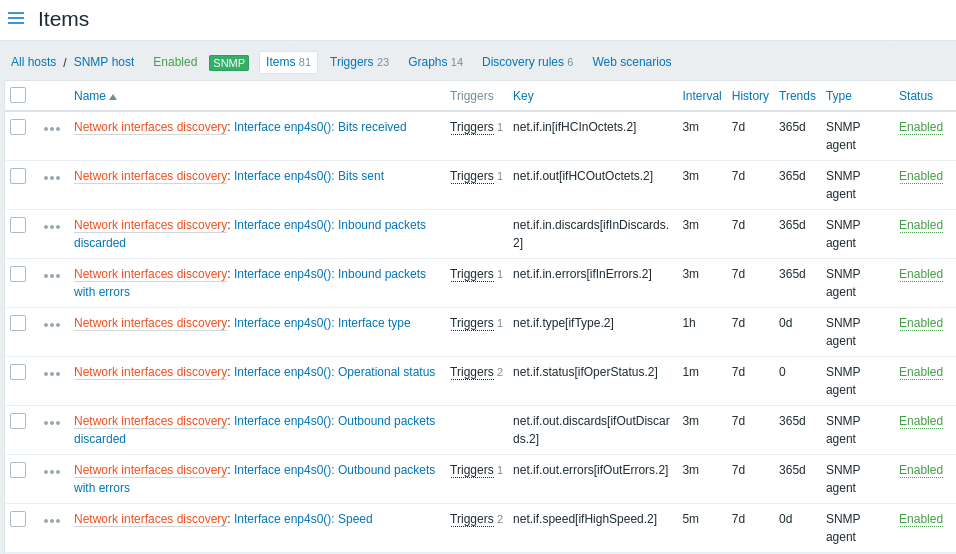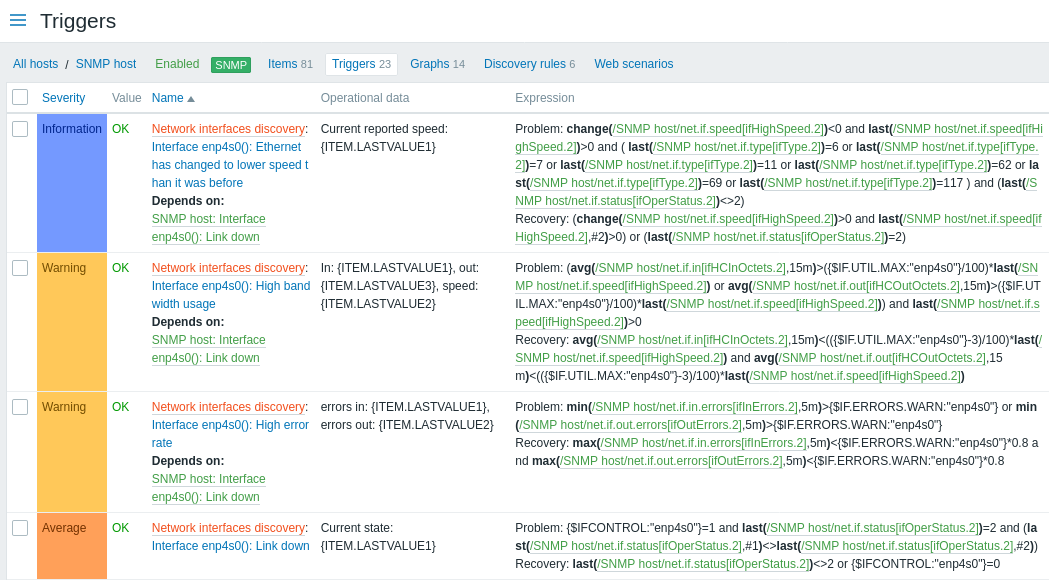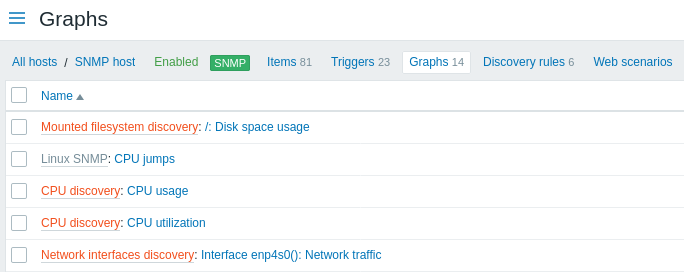4 Descubrimiento de OID SNMP
Descripción general
En este apartado realizaremos un descubrimiento SNMP en un conmutador.
Clave de artículo
A diferencia del sistema de archivos y el descubrimiento de interfaces de red, el elemento no no necesariamente tiene que tener una clave "snmp.discovery" - tipo de elemento de SNMP agente es suficiente.
Para configurar la regla de descubrimiento, haga lo siguiente:
- Ir a: Configuración → Plantillas
- Haga clic en Descubrimiento en la fila de una plantilla apropiada

- Haga clic en Crear regla de descubrimiento en la esquina superior derecha de la pantalla
- Complete el formulario de regla de descubrimiento con los detalles requeridos como en el captura de pantalla a continuación
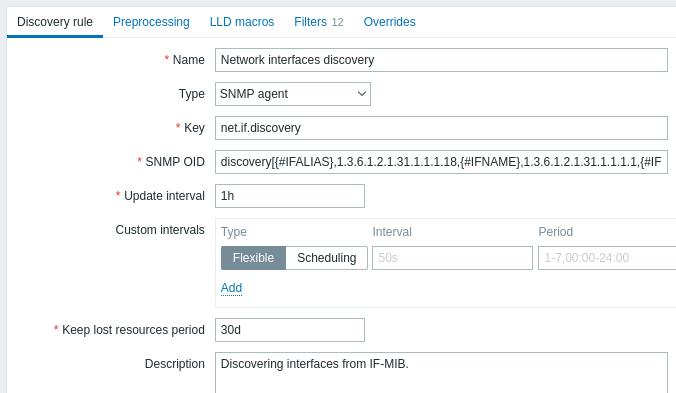
Todos los campos de entrada obligatorios están marcados con un asterisco rojo.
Los OID a descubrir se definen en el campo OID de SNMP en la siguiente formato: descubrimiento[{#MACRO1}, oid1, {#MACRO2}, oid2,…,]
donde {#MACRO1}, {#MACRO2} … son nombres de macro lld válidos y oid1, oid2... son OID capaces de generar valores significativos para estos macros. Una macro incorporada {#SNMPINDEX} que contiene el índice del El OID descubierto se aplica a las entidades descubiertas. el descubierto las entidades se agrupan por {#SNMPINDEX} valor de macro.
Para entender lo que queremos decir, realicemos algunos snmpwalks en nuestro conmutador:
$ snmpwalk -v 2c -c público 192.168.1.1 IF-MIB::ifDescr
IF-MIB::ifDescr.1 = CADENA: WAN
IF-MIB::ifDescr.2 = CADENA: LAN1
IF-MIB::ifDescr.3 = CADENA: LAN2
$ snmpwalk -v 2c -c público 192.168.1.1 IF-MIB::ifPhysAddress
IF-MIB::ifPhysAddress.1 = CADENA: 8:0:27:90:7a:75
IF-MIB::ifPhysAddress.2 = CADENA: 8:0:27:90:7a:76
IF-MIB::ifPhysAddress.3 = CADENA: 8:0:27:2b:af:9eY configure SNMP OID en: descubrimiento[{#IFDESCR}, ifDescr, {#IFPHYSADDRESS}, ifPhysAddress]
Ahora esta regla descubrirá entidades con macros {#IFDESCR} configuradas en WAN, LAN1 y LAN2, macros {#IFPHYSADDRESS} configuradas en 8:0:27:90:7a:75, 8:0:27:90:7a:76 y 8:0:27:2b:af:9e, {#SNMPINDEX} macros configuradas para los índices OID descubiertos 1, 2 y 3:
[
{
"{#SNMPINDEX}": "1",
"{#IFDESCR}": "WAN",
"{#IFPHYSADDRESS}": "8:0:27:90:7a:75"
},
{
"{#SNMPINDEX}": "2",
"{#IFDESCR}": "LAN1",
"{#IFPHYSADDRESS}": "8:0:27:90:7a:76"
},
{
"{#SNMPINDEX}": "3",
"{#IFDESCR}": "LAN2",
"{#IFPHYSADDRESS}": "8:0:27:2b:af:9e"
}
]Si una entidad no tiene el OID especificado, entonces el correspondiente La macro se omitirá para esta entidad. Por ejemplo si tenemos el siguientes datos:
ifDescr.1 "Interfaz #1"
ifDescr.2 "Interfaz #2"
ifDescr.4 "Interfaz #4"
ifAlias.1 "eth0"
ifAlias.2 "eth1"
ifAlias.3 "eth2"
ifAlias.5 "eth4"Entonces, en este caso, descubrimiento SNMP. discovery[{#IFDESCR}, ifDescr, {#IFALIAS}, ifAlias] devolverá el siguiente estructura:
[
{
"{#SNMPINDEX}": 1,
"{#IFDESCR}": "Interfaz #1",
"{#IFALIAS}": "eth0"
},
{
"{#SNMPINDEX}": 2,
"{#IFDESCR}": "Interfaz #2",
"{#IFALIAS}": "eth1"
},
{
"{#SNMPINDEX}": 3,
"{#IFALIAS}": "eth2"
},
{
"{#SNMPINDEX}": 4,
"{#IFDESCR}": "Interfaz n.º 4"
},
{
"{#SNMPINDEX}": 5,
"{#IFALIAS}": "eth4"
}
]Prototipos de métricas
La siguiente captura de pantalla ilustra cómo podemos usar estas macros en prototipos de métricas:
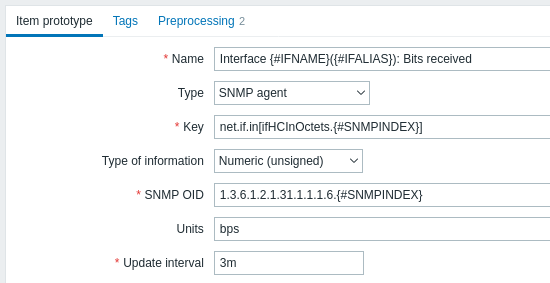
Puede crear tantos prototipos de métricas como necesite:
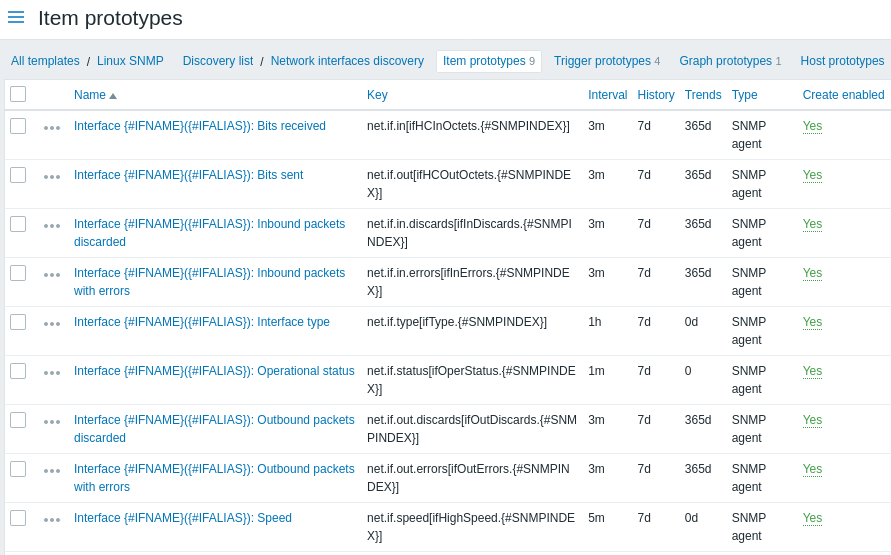
Prototipos de iniciadores
La siguiente captura de pantalla ilustra cómo podemos usar estas macros en prototipos de iniciadores:
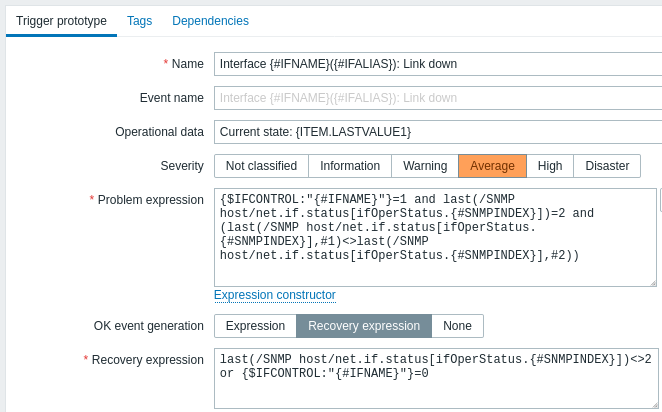
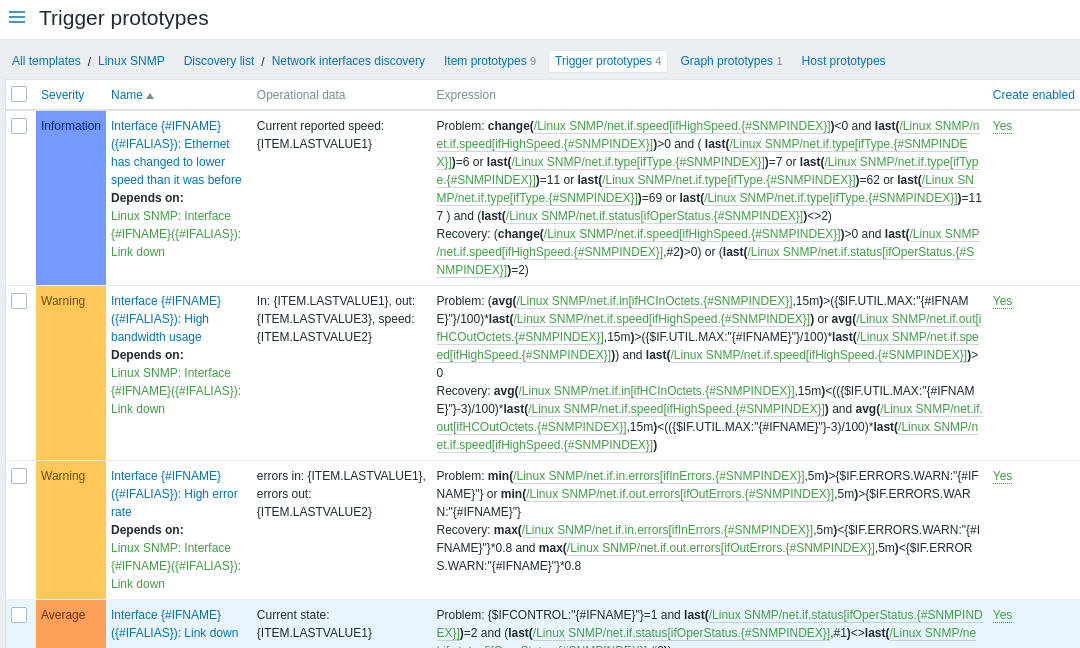
Prototipos de gráficos
La siguiente captura de pantalla ilustra cómo podemos usar estas macros en prototipos de gráficos:
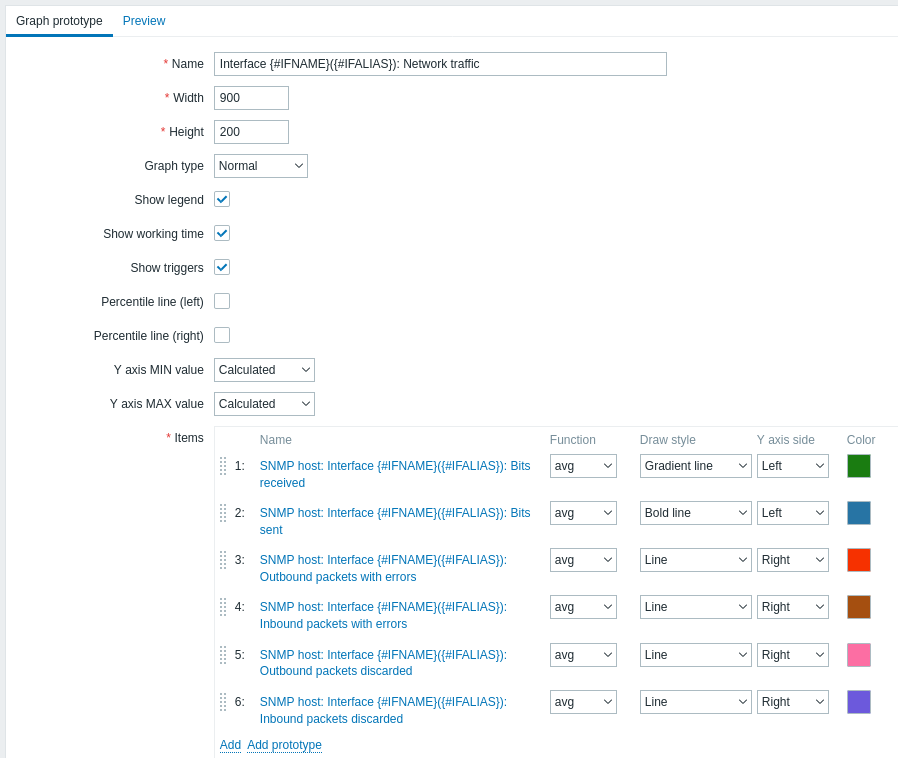

Un resumen de nuestra regla de descubrimiento:

Entidades descubiertas
Cuando el servidor se ejecuta, creará métricas, iniciadores y gráficos reales basados en los valores que devuelve la regla de descubrimiento SNMP. En la configuración del equipo tienen el prefijo de un enlace naranja a una regla de descubrimiento de la que provienen.
